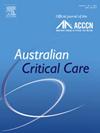利用机器学习预测机械通气成功脱机:系统综述
IF 2.7
3区 医学
Q2 CRITICAL CARE MEDICINE
引用次数: 0
摘要
机器学习(ML)模型代表了先进的计算方法,在预测机械通气(MV)成功脱机方面的应用越来越多。虽然机器学习本身具有悠久的历史,但其在MV断奶结果中的应用最近才出现。在这篇系统综述中,我们评估了ML对预测成年MV患者成功断奶结局的影响。方法检索截止到2024年5月的spubmed、EMBASE、Scopus、Web of Science、谷歌Scholar等电子数据库。此外,检索ACM数字图书馆和IEEE explore数据库。我们纳入了同行评议的研究,研究了ML模型对成年患者成功MV的预测。我们使用了乔安娜布里格斯研究所检查表的修改版本来进行质量评估。结果共纳入18 336项研究。增强算法,包括极端梯度增强(XGBoost)和光梯度增强机,是最常用的方法之一,其次是随机森林、多层感知器、逻辑回归、人工神经网络和卷积神经网络(一种深度学习模型)。最常见的交叉验证方法包括5次和10次交叉验证。模型性能各不相同,人工神经网络的准确率为77% ~ 80%,多层感知器的准确率为87%,准确率为94%,卷积神经网络的曲线下面积为91%,94%。XGBoost在曲线下比较的区域总体上优于其他模型。质量评估表明,几乎所有的研究都具有高质量,10项研究中有7项获得满分。结论sml模型能有效预测成人MV患者的断奶结局,XGBoost模型优于其他模型。然而,缺乏利用较新架构的研究,例如变压器模型,突出了在该领域进一步探索和改进的机会。本文章由计算机程序翻译,如有差异,请以英文原文为准。
Harnessing machine learning for predicting successful weaning from mechanical ventilation: A systematic review
Background
Machine learning (ML) models represent advanced computational approaches with increasing application in predicting successful weaning from mechanical ventilation (MV). Whilst ML itself has a long history, its application to MV weaning outcomes has emerged more recently. In this systematic review, we assessed the effects of ML on the prediction of successful weaning outcomes amongst adult patients undergoing MV.
Methods
PubMed, EMBASE, Scopus, Web of Science, and Google Scholar electronic databases were searched up to May 2024. In addition, ACM Digital Library and IEEE Xplore databases were searched. We included peer-reviewed studies examining ML models for the prediction of successful MV in adult patients. We used a modified version of the Joanna Briggs Institute checklist for quality assessment.
Results
Eleven studies (n = 18 336) were included. Boosting algorithms, including extreme gradient boosting (XGBoost) and Light Gradient-Boosting Machine, were amongst the most frequently used methods, followed by random forest, multilayer perceptron, logistic regression, artificial neural networks, and convolutional neural networks, a deep learning model. The most common cross-validation methods included five-fold and 10-fold cross-validation. Model performance varied, with the artificial neural network accuracy ranging from 77% to 80%, multilayer perceptron achieving 87% accuracy and 94% precision, and convolutional neural network showing areas under the curve of 91% and 94%. XGBoost generally outperformed other models in the area under the curve comparisons. Quality assessment indicated that almost all studies had high quality as seven out of 10 studies had full scores.
Conclusions
ML models effectively predicted weaning outcomes in adult patients undergoing MV, with XGBoost outperforming other models. However, the absence of studies utilising newer architectures, such as transformer models, highlights an opportunity for further exploration and refinement in this field.
求助全文
通过发布文献求助,成功后即可免费获取论文全文。
去求助
来源期刊

Australian Critical Care
NURSING-NURSING
CiteScore
4.90
自引率
9.10%
发文量
148
审稿时长
>12 weeks
期刊介绍:
Australian Critical Care is the official journal of the Australian College of Critical Care Nurses (ACCCN). It is a bi-monthly peer-reviewed journal, providing clinically relevant research, reviews and articles of interest to the critical care community. Australian Critical Care publishes peer-reviewed scholarly papers that report research findings, research-based reviews, discussion papers and commentaries which are of interest to an international readership of critical care practitioners, educators, administrators and researchers. Interprofessional articles are welcomed.
 求助内容:
求助内容: 应助结果提醒方式:
应助结果提醒方式:


